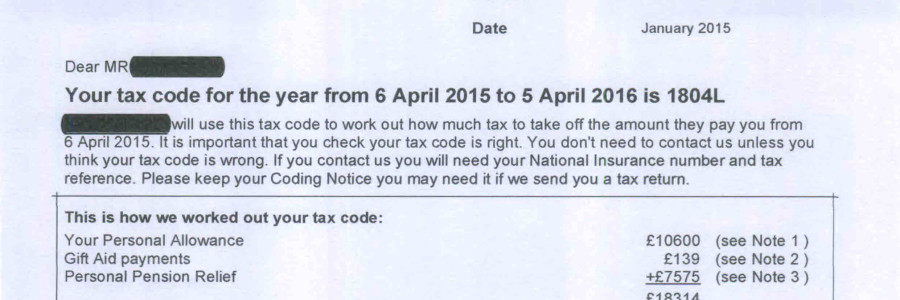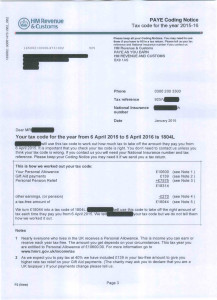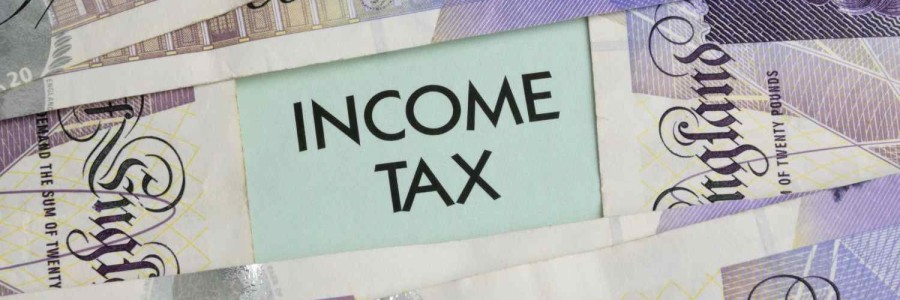Tax avoidance schemes – not only the rich and famous get burnt!
Why so many words?
This is not an article typical of my articles about tax, as it is very detailed and about twice as long. My more normal articles can be accessed on my website at www.huston.co.uk/blog.html
The article was written, on request, as a detailed background to, and opinion on, the tax avoidance cases we read about in the national news, and should be a valuable resource for journalists and anyone with an interest in the tax avoidance subject.
Who is the author Adrian Huston?
Adrian was a senior HM Inspector of Taxes before leaving the Revenue to set up UK tax firm Huston & Co Tax Consultants & Accountants www.Huston.co.uk . He was joined by his Tax Inspector wife Felicity Huston and they have built a successful practice with a national and international profile.
Adrian has hundreds of overseas clients and the firm has the full range of accountancy clients ranging from landlords through business-people and companies to High Net Worth Individuals.
Adrian & Felicity help people who find they are being investigated by HMRC, whether for a failed tax-avoidance scheme or for suspected tax fiddling. Many are brought to them by accountants, and then, once all sorted, handed back to the accountant who continues with their routine affairs.They use their tax/negotiation skills, and HMRC inside knowledge, to steer the client though this stressful time with the minimum of cost and in the quickest possible time.
Adrian is regularly consulted by the national media and frequently quoted by them as a tax expert. He commented on Tony Blair’s business network in Bloomberg Magazine http://www.bloomberg.com/news/2013-04-04/blair-scorned-at-home-builds-business-empire-abroad.html
Adrian frequently appears on the BBC (TV & radio) and independent news channels and is quoted in The Times, the Mail on Sunday, Sunday Times, Belfast Telegraph etc.
Background and timeline of a tax avoidance scheme
After many years where complex tax schemes were talked about in hushed tones and no-one knew who was in them, a new era has dawned. One where word reaches the national press perhaps monthly of failed tax avoidance schemes and the well-known people caught up in them. Gary Barlow is the latest to hit the headlines, in May 2014.
In just one week in February 2014 we heard how:
Those involved in tax avoidance schemes includes very experienced and respected professionals as well as highly paid media personalities and business-people. These people probably have some idea of how things can go wrong.
For the rest of you I will paint a picture of what happens and how it can all unravel – very, very slowly. I will use a fictional character called Danny Danegeld.
- Danny pays 40% tax or more and decides he would like to pay less. People like Danny typically pay a lot of tax every year, but sometimes his friends want a tax saving on an isolated Capital Gain or house deal. There they may want to reduce the CGT or Stamp Duty.
- Danny finds an advisor who knows the ‘perfect’ scheme to cut his tax bill. Maybe for a fee they can even make the tax bill disappear altogether (however the fee might be 10-15% of the income covered, which is as good as a tax.)
- This scheme has usually been devised by clever financiers, accountants and lawyers who believe they have spotted a weakness in UK tax law, and plan to exploit it until the weakness is corrected by new legislation.
- The schemes have often been reviewed by QCs (Queen’s Counsel) who give their opinion that if implemented properly the tax avoidance scheme will legitimately reduce one’s tax bill. And if challenged by HMRC it should stand up to scrutiny. This QC opinion is a massive selling point used by the promoters selling the idea.
- Danny decides to go for it and hands over a hefty fee to the promoter. The paperwork starts being generated.
- Tax avoidance schemes generally have some odd features – like loans which will never be repaid, businesses you really aren’t running, but for tax purposes look like you are – that sort of thing.
- In due course Danny files his personal or company tax returns with HMRC. The tax bill is greatly reduced.
- HMRC expects those using registered tax avoidance schemes to declare them on their Tax Return. For example in the 2012/13 Return this is entered in the Additional Information, page 4 – see http://www.hmrc.gov.uk/forms/sa101.pdf
- The idea of having a tax avoidance scheme registered with HMRC, and having to put down its number on your Tax Return always amuses me. If a tax expert tells HMRC they have devised a clever scheme and plan to sell the idea to others, what’s going to happen? Of course HMRC is going to try to close whatever loophole they plan to exploit. And then HMRC will investigate everyone they find using the scheme.
- In Danny’s case he either admits on his tax return that he is using scheme number 123456, or his advisors tell his he is not obliged to admit it. (Perhaps because they say the scheme does not need to be registered.)
- Then HMRC discovers some or all of the people using the scheme, including our Danny. This is easy if he and others put the scheme reference on his tax return.
- In other cases HMRC might stumble across the scheme when investigating someone’s affairs. Or investigating a scheme promoter. Then they might require the promoter to tell them everyone who is in the scheme.
- There then follows a deliberately long and protracted game. HMRC launches formal tax ‘enquiries’ into the hundreds of people in the scheme, including Danny. They have to do this to keep open their chance to ask for extra tax.
- HMRC then selects a small sample, say 5, of the taxpayers. In their case they will be required to supply all the supporting documentation about their tax scheme. HMRC’s aim is to probe the papers and see if they can find faults, or perhaps to see if the scheme is legit.
- HMRC has no interest in doing this quickly. Remember while only 5 people have their affairs gone over with a fine-toothed comb, Danny and the other 500 are told their enquiry (investigation) remains open until the samples are examined. This could be years. (Chris Moyles’ tax return was for 2008 and only now in 2014 does he know he has to pay the full tax after all!)
- If properly advised Danny and the 500 will consider paying, on account, to HMRC the original tax they would have owed – to reduce the amount of interest HMRC can charge them. If Danny wins the case he will get the tax back. If he loses then he only owes HMRC penalties and interest to the date the tax was paid. Interest over 6 years could add nearly 20% to what he owes HMRC.
- If HMRC, after taking its own sweet time, decides the scheme is legal and achieves the tax advantage it set out to do, then they will apply this decision to Danny and all 500 investors. They are in the clear. (HMRC may change the law to stop new people doing the same.)
- Of course on the other hand if they decide the case fails then they will expect all Danny and the 500 investors to accept the ruling and cough up their tax, interest, and probably penalties.
- Only the brave would continue to fight their corner since they would be spending thousands of pounds with a limited chance of success.
So what were Alex Ferguson and Chris Moyles up to?
- Alex Ferguson, in common with Sven-Goran Eriksson and about 287 others, joined a partnership to buy the rights to Disney films Enchanted and Underdog. The scheme was called Eclipse 35 and was first used in 2006. Yet only now in 2014 is it becoming clear that HMRC has successfully defeated the scheme. (See what I mean about the long delays.) The partnership borrowed money to buy the rights to the films. These were bought by Eclipse 35, who then promptly leased them back to Disney over 20 years. HMRC has to date successfully challenged the legitimacy of the scheme. Fergie could face a £1 million bill in the end and lots of fees to advisors.
- When Moyles’s tax avoidance scheme came to a Tax Tribunal he asked for anonymity as the bad press could damage his career. He lost that point as well as the overall tax case. In his case his tax returns claimed he was a car dealer making massive losses and thus claiming tax relief. His scheme was called Working Wheels. In an incredible tax return Moyles declared used car sales of just £3,731. (Was that one car or maybe two?) Yet finance costs left him with losses of £1 million! Amazing that HMRC noticed this looked a little odd. It was clear to the tax Tribunal that Moyles was not really a car dealer and the whole aim of the exercise was to generate losses and thus tax advantages. Of all the fund managers, celebrities and high earners who tried this ‘Working Wheels’ Moyles was one of 3 taken for detailed testing. All the other 450 people who paid to get into scheme will now be expected to settle up with the tax-man – including paying penalties.
Why does HMRC take so long on these cases?
They will say the matters are complex and accountants take time to supply information.
However it is clear to those in the tax avoidance field (and those of us who help clear up the mess) that HMRC is quite happy that the cases drag on. If people considering a tax avoidance scheme know their affairs will be under scrutiny for 5 or 6 years – and they won’t know their true tax liability until it’s over, then this will discourage people from the schemes.
The March 2014 Budget saw the Chancellor announce that he wants people embarking on a tax avoidance scheme to pay their full tax, then argue with HMRC and hope to get the tax back later. This will make tax avoidance schemes much less sexy.
What to watch out for in tax avoidance schemes?
Have in your mind the old saying “If it looks too good to be true…then it probably is.” Paying 11% fees to a tax avoidance scheme and no income tax might seem attractive. 5 years on and HMRC descends. Then you have years of uncertainty, and end up paying all the original 40% plus of tax, added to that interest and penalties. Not to mention tens of thousands in accountancy and legal costs. And then you may not be able to get back any of the 11% fees to paid the scheme. So you end up massively worse off than if you paid the full tax in the first place …and could have slept easy in your bed.
Also watch for schemes where – if the full workings were sent to your own tax office – the Revenue might not agree with the tax treatment. Ask the person promoting the scheme if you should do this, and watch their reaction. I find this approach flushes out the truth from many people who say they have the perfect scheme. Most schemes involve some form of smoke-screen. Many also involve offshore jurisdictions, though that aspect on its own may be legal. HMRC often looks for the commercial purpose of a series of transactions. If none is visible, then they may win their tax case.
Conclusion
I do not recommend these tax avoidance schemes to my clients. Even the ones which sound good can leave people with years of uncertainty. And just because it has worked for a few years does not mean you are in the clear. HMRC can look back 20 years! At worst a failed scheme can cost people a small fortune.
There are legal ways of managing your tax bills – especially now Corporation Tax rates are going to be at most 21%, and 20% for many. It’s not long ago that big companies paid 30%, 21% is pretty good. Pension contributions can be very helpful, though not of much help for those earning millions.
If you use a company then the amount of personal income tax you pay will be a factor of the amount of money you insist on taking out of your company to fund your lifestyle. Take more salary and dividends, pay more tax. Live quieter, pay less. You decide.






